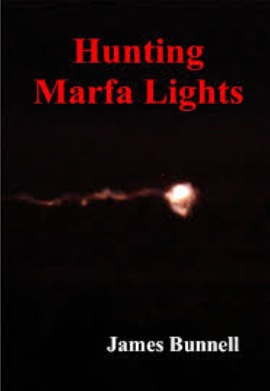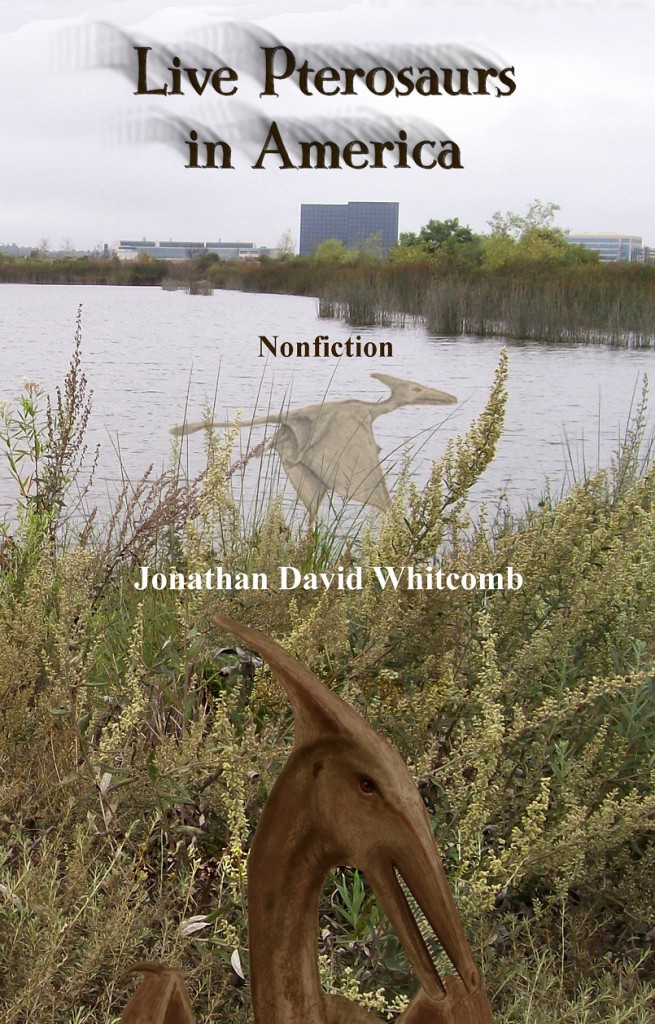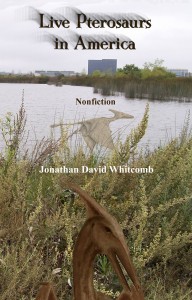We have an interesting selection here, for interpretations of Marfa Lights in Texas. Take your pick:
- Ordinary car headlights
- Extraordinary flying dinosaurs
- Dancing ghosts
- Effects of solar activity
- Plasma related to geology
To narrow down the range, let’s get rid of something right away. No, not the flying dinosaurs, for the actual theory is more involved and credible than that title suggests. It’s #4, effects of solar activity.
But we need to begin with a specific definition of what we are calling “Marfa Lights.” For this post, let’s confine our definition to the two types called, by the scientist James Bunnell (author of Hunting Marfa Lights), CE-II and CE-III, both of which exhibit properties suggesting perhaps chemical or combustion properties with electromagnetic attributes:
CE-II: Stationary balls of light that turn on and off and sometimes multiply
CE-III: Same as CE-II but they travel above the desert foliage and below the appearance of background mesas
Solar Activity Irrelevant
In “Are Marfa Lights products of solar events?” by Bunnell, nine years of study made it plain: Activities of the sun had no relationship to human observations of the more mysterious of the lights around Marfa, Texas.
Car Headlights as “Marfa Lights”
Of course car headlights, from a reasonable distance, might appear mysterious under the right atmospheric conditions. But those sightings are irrelevant to the CE-III ML’s that James Bunnell has studied for many years. Car headlights do not fly over the bushes southeast of Marfa, Texas, with combustion-like eruptions. One CE-III was tracked, and it was seen to have flown about eleven miles where there was no road or highway. It was far above the desert floor. This was recorded by more than one video camera, at very different locations, eliminating any possibility of a mirage effect.
Dancing Ghosts
Some people call mysterious flying lights “ghost lights.” But until somebody can come up with some evidence to support this idea, it need not capture our attention or haunt our imagination.
Plasma Related to Geology
In the scientific paper (or “discussion”) “What is the source of Marfa Lights,” by Bunnell (2012), the case is made for plasma bubbles generated deep underground. The bubbles might rise to the surface through fault zones, and a good number of the sightings have been over fault zones.
But problems arise from the plasma bubble concept. Why do some of the objects divide in two, with those two separating for some distance before one of them reverses course 180 degrees and returns to the other one? The separation distances, if I understand correctly, are commonly significant, not just inches or a few feet but as much as hundreds of feet. If some force had the power to reunite two lights that had separated, why would not all of them begin that reunion when they were only inches apart or a few feet apart? If there is some attraction that causes some ML’s to return to each other, the power of the attraction would be far greater when they were close together.
Mr. Bunnell has shown, in his plasma-bubble discussion, that some ML’s fly along fault lines. He shows correlation but not cause for the CE-III flight behavior. I find his observations extremely valuable to future knowledge and understanding of the details of explanation; but for now, I find a plasma ball hard to swallow.
“Flying Dinosaurs” or at least nocturnal predators
Why would nocturnal bioluminescent flying predators line up their flights above faults lines. From Mr. Bunnell’s map in his scientific paper, I noticed those fault lines coincide with creeks, in particular Little Goat Creek and Walnut Creek. I have learned, from eyewitness testimonies, that apparent ropens in Southern California often fly near (or at least not very far from) storm channels or old creek beds. I see predatory purposes in those nocturnal flights.
The faults in the underground geology south of the Marfa Lights View Park surely caused the creek channels to form on the ground surface, but the faults themselves are not directly related to the CE-III lights that fly above them. At any rate, some of those CE-III ML’s fly, at times, where there is no fault beneath them.
An eyewitness observed glowing flying creatures in at least two sightings, in Pasadena, Texas, from late 2011 to early 2012, at least once with two flying creatures per sighting. In an email, he told me, “Do you know what they are? At first I thought they were bats but glowing bodies??? I don’t know what else to think… Other than luminescent pterosaurs . . . . they were glowing red-orange”
Conclusion
The best explanation, strange as it sounds, is that most, if not all, of the CE-II and CE-III Marfa Lights in southwest Texas are from the bioluminescent glow of a group of nocturnal flying predators, maybe even if that means pterosaurs.
.
The author of Hunting Marfa Lights, James Bunnell, said nothing about the following theory in his book. I informed him of part of my theory early in 2010, after the publication of his Hunting Marfa Lights.
Mexicans may use their own word for “bird” (pajaro in Spanish) when referring to a large featherless flying creature. And why should those apparent pterosaurs avoid Mexico when they have been seen in Cuba? [And Marfa, Texas, is not too far from the border with Mexico, within flying distance.]
Living Nightmare: Attack in the Dead of Winter
What could be worse than any nightmare? In the dead of night, you are awakened by what you fear most, glaring down at you. To humans, this monster should not even exist except in a dream. This one is real. Race out of your bedroom; it’s after you. Race out the front door; it follows. Search for a place to hide; it’s too late. You are exposed, surrounded by many monsters ready to feast. You have fallen into their trap. Your family is scattered, chased across the freezing countryside. You are alone. You are Eptesicus fuscus, a Big Brown Bat.
Professors Versus Modern Flying Dinosaurs
The extinction of all species of dinosaurs and pterosaurs has been taken for granted for generations of Americans; ask any kindergartner. But a recent survey of biology professors has revealed some doubt about pterosaur extinctions.
I have no desire to beat dead fossil bones into dust; paleontology has a critical role in understanding pterosaurs. . . . however, I still lift up the modern eyewitness, pointing to the human experience of encountering a modern pterosaur. But does that make me a pterosaur expert?
.

Cover of nonfiction book by the scientist James Bunnell
.




